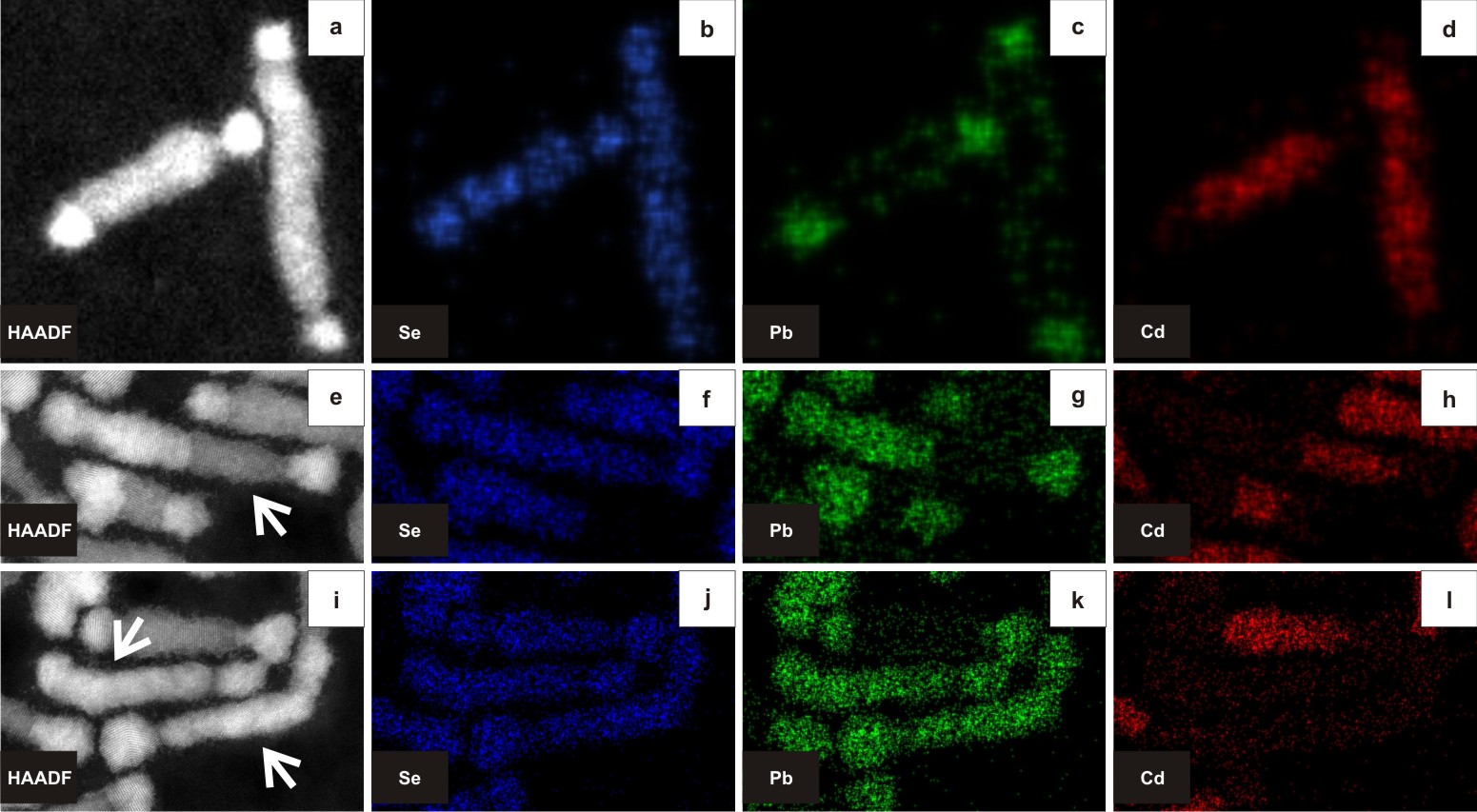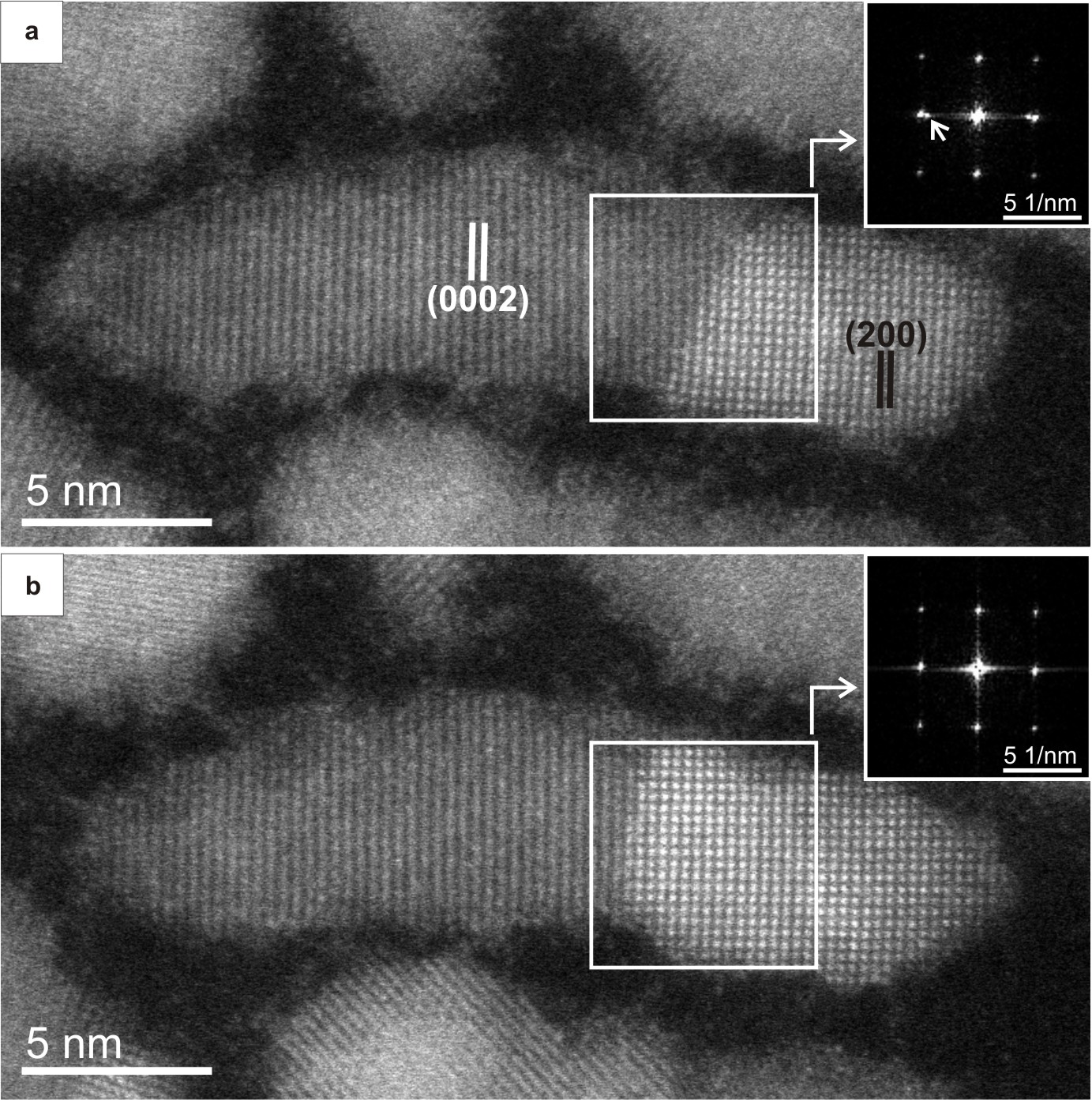IT-7-P-5919 Real-time observation of in-situ cation exchange in CdSe-PbSe nanodumbbells during epitaxial solid-solid-vapor growth
Both the synthesis and design of hetero-nanocrystals (HNCs) have undergone a rapid development, whereby PbSe and CdSe NCs are key materials acting as functional building blocks within a wide variety of heterogeneous nanostructures.1,2 Heat treatment of HNCs can induce new interface designs, exemplified by the transformation of PbSe/CdSe core/shell systems into PbSe-CdSe bi-hemispheres.2 Here, we report an in-situ heating-induced epitaxial PbSe NC domain growth at the solid-solid PbSe-CdSe nano-interface through cation exchange. We show that Pb replaces Cd at the PbSe/CdSe interface, resulting in growth of the PbSe phase at the expense of the CdSe phase.3 In analogy with vapor-liquid-solid4 and vapor-solid-solid5 growth mechanisms, the currently observed process could be called solid-solid-vapor (SSV) growth as the Cd evaporates, either as neutrally charged Cd atoms or in a molecular complex such as Cd-oleate. Figure 1 shows the elemental maps of CdSe-PbSe HNCs at each stage of the cation exchange during epitaxial SSV growth mechanism. As a result of the cation exchange from CdSe to PbSe, the crystal structure transformed epitaxially from hexagonal wurtzite (WZ) to cubic rock-salt (RS). Figure 2 shows this transformation at atomic resolution. When the HNC was heated from 160 ⁰C (Figure 2a) to 180 ⁰C (Figure 2b), the brighter intensity corresponding to PbSe advanced into the CdSe region. The PbSe RS (200) lattice spacings started to appear along the nanorod domain instead of the CdSe WZ (0002) lattice spacings, as confirmed by the Fourier Transformation (FT) patterns shown in the insets. It is clear that the cation exchange takes place at the PbSe/CdSe interface and propagates epitaxially (layer by layer) along the WZ<0001> direction.
[1] Son, D. H. et al. Science 2004, 306, 1009-1012.
[2] Grodzińska, D. et al. J. Mater. Chem. 2011, 21, 11556-11565.
[3] Yalcin, A. O. et al. Nano Lett. 2014, 14, 3661–3667.
[4] Gudiksen, M. S. et al. Nature 2002, 415, 617-620.
[5] Persson, A. I. et al. Nat. Mater. 2004, 3, 677-681.
This work is part of the research programme of the Foundation for Fundamental Research on Matter (FOM), which is part of the Netherlands Organization for Scientific Research (NWO).

